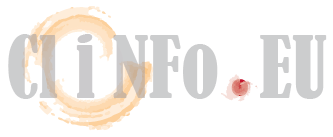Old drugs, new tricks: drug repurposing in the times of translational sciences

Clinical research – full of surprises
Drug development has always been a winding road full of twists and turns. This still holds true nowadays, when we claim to understand the drugs’ methods of actions better than ever. Yet, unexpected discoveries in the various stages of research are still rather the norm than the exception.
Serendipity vs. Science
Unexpected drug effects are not limited to only adverse drug reactions. Some effects turn out to be beneficial, or even to be an unexpected breakthrough in the treatment of another disease.
A vivid example is the accidental discovery of sildenafil as an agent for erectile dysfunction – a substance originally developed as a medication for angina pectoris.
However, unexpected beneficial effects are not only observed in novel drugs, but especially in well-known and widely used older substances and may lead to a wider scope of application. The following table lists some examples of how initial or intended indications may shift or extend: Click here to view the table
In the case of Sildenafil, mere chance may have been the trigger for a new discovery. However, with the continuous evolution of translational sciences, its novel technologies and improved pathogenic understanding, drug repurposing could become an increasingly dynamic process.
Repurposing old drugs and rescuing failed ones
Obviously, considerable cost and risks are involved in the development of new compounds: on average, only 10% of drugs experimentally proven to be effective enter the market. And having reached that stage, only 2 out of 10 marketed drugs are able to win back the original development cost2.
The above examples demonstrate that there may be a big benefit to not only exploit serendipitous discoveries. Instead, abandoned or already approved drugs could be screened systematically: candidate drugs include those that proved to be safe in initial studies, yet their further development had been put on hold: either because they showed a lack of efficacy in their intended indication, or for economic reasons.
In Germany, specifically, the introduction of the Act on the Reform of the Market for Medicinal Products (AMNOG) and its radical change of the market environment for pharmaceuticals has created another economic hurdle for the marketing of fledgling drugs.
Current example: Angiotensin Receptor Blockers – more to come?
To pick just one of many current examples: Angiotensin Receptor Blockers (ARB) are a well-established substance class, commonly used as antihypertensive agents.
Besides their eponymous effect on angiotensin receptors, some drugs of this class have shown to effectively inhibit an intracellular signal transduction cascade, the so-called transforming growth factor beta (TGF-β) pathway. This pathway is involved in many cellular processes, including modulation of inflammatory responses as well as apoptosis.
In the wake of increasing scientific knowledge on this signaling pathway, potential new purposes of ARB may include diseases as diverse as
“Could pharma open its drug freezers?”6
As the US National Institutes of Health (NIH) observed in 2011, repurposing old or failed compounds could allow pharmaceutical companies to recoup the costs spent on their research and development, and accelerate scientific progress for the good of the whole society78.
In order to bring together data from clinical research and basic science, and to conduct extensive post-marketing authorization research, a joint effort from academia, the industry and authorities would be necessary.
Picture: @juliasudnitskaya /Fotolia.com
- Old Drugs Are New Again, Pharmacy Times. http://www.pharmacytimes.com/publications/issue/2011/june2011/old-drugs-are-new-again-/, Published online June 13, 2011
- Khanna, I., Drug discovery in pharmaceutical industry: productivity challenges and trends. Drug discovery today, 2012. 17(19): p. 1088-1102.1
- Ongali, B., et al., Angiotensin II type 1 receptor blocker losartan prevents and rescues cerebrovascular, neuropathological and cognitive deficits in an Alzheimer’s disease model. Neurobiology of Disease, 2014. 68: p. 126-136
- Bar-Klein, G., et al., Losartan prevents acquired epilepsy via TGF-beta signaling suppression. Ann Neurol, 2014. 75(6): p. 864-75
- Quigley, H.A., et al., Losartan Treatment Protects Retinal Ganglion Cells and Alters Scleral Remodeling in Experimental Glaucoma. PloS one, 2015. 10(10): p. e0141137
- Mullard, A., Could pharma open its drug freezers? Nat Rev Drug Discov, 2011. 10(6): p. 399-400
- Mullard, A., Could pharma open its drug freezers? Nat Rev Drug Discov, 2011. 10(6): p. 399-400
- Tobinick, E.L., The value of drug repositioning in the current pharmaceutical market. Drug News Perspect, 2009. 22(2): p. 119-25









